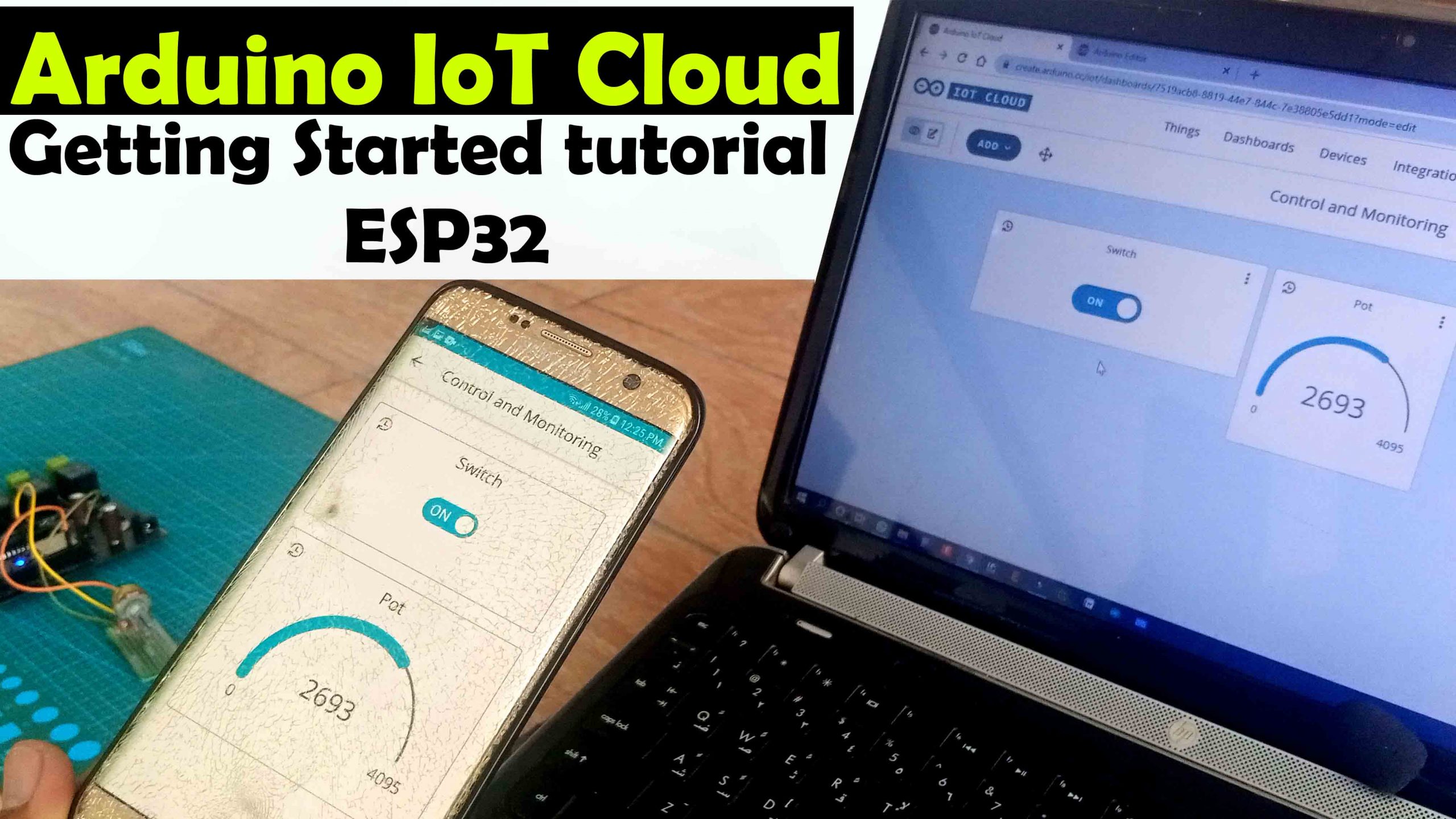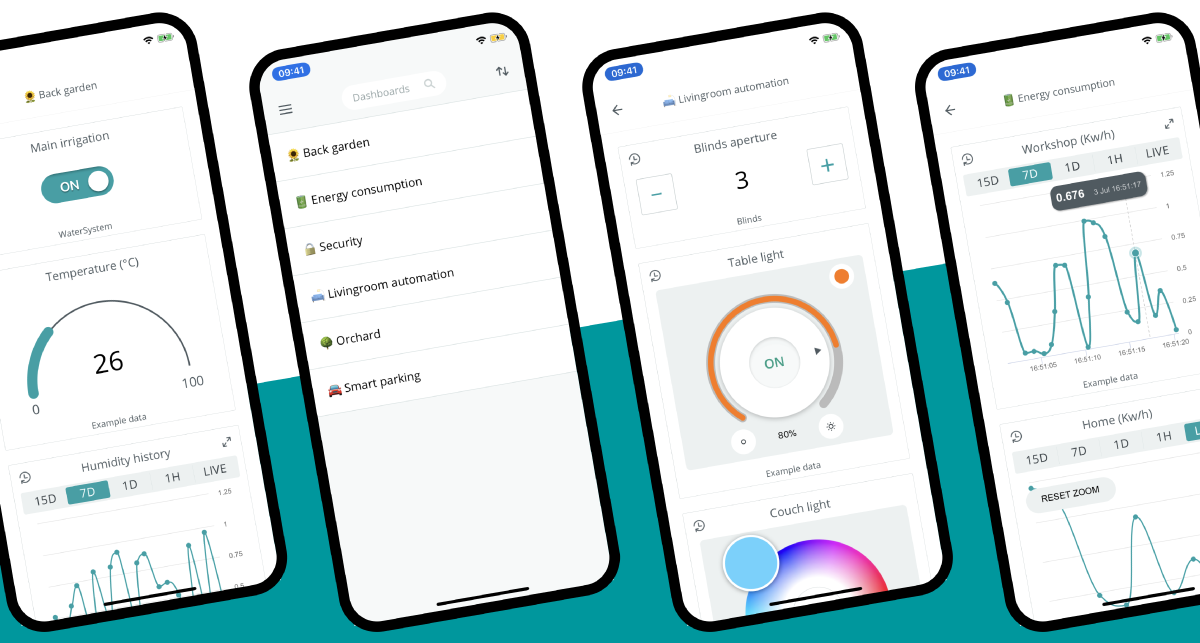Arduino IoT Cloud: Your Guide To Remote Control & More!
Is the ability to connect Internet of Things (IoT) devices to the cloud merely an option, or is it a fundamental requirement for success in today's technological landscape? The answer is unequivocally the latter; cloud connectivity has transformed from a futuristic concept into an essential component of modern technology, driving innovation across diverse sectors.
The evolution of IoT has been nothing short of revolutionary. From the smart home devices that anticipate our needs to the complex systems governing industrial processes, the capacity to link these devices to a central, accessible platform is no longer a luxury but a necessity. This convergence of physical devices and cloud-based services enables a myriad of possibilities, including remote monitoring, real-time data analysis, and automated control, all of which contribute to enhanced efficiency, improved decision-making, and unprecedented levels of convenience.
On February 6th, 2019, the unveiling of the public beta of the Arduino IoT Cloud marked a significant milestone in the democratization of IoT technology. Arduino, a name synonymous with accessibility in the world of electronics, sought to simplify the complexities of cloud connectivity, offering a platform that enabled users of all skill levels to create, deploy, and manage their IoT projects with ease. This initiative, in many ways, mirrored the aspirations of the existing Blynk product, aiming to provide a user-friendly interface for connecting Arduino microcontrollers to the cloud.
The core functionality of the Arduino IoT Cloud revolves around its ability to facilitate seamless communication between physical devices and cloud services. It provides the necessary infrastructure for users to create IoT applications, control them remotely, and integrate them with other existing IoT systems. This eliminates the need for extensive programming expertise, making the development process more accessible to a broader audience, and thereby stimulating greater innovation. The platform also offers a comprehensive set of tools for visualizing and analyzing data, empowering users to extract valuable insights from their IoT deployments.
One of the key components of the Arduino IoT Cloud ecosystem is the Arduino IoT Cloud Remote app. This app serves as a companion to the cloud platform, allowing users to interact with their IoT projects from their mobile devices. It provides the ability to view dashboards, control connected devices, and access sensor data from the phone itself. The app is available for both iOS and Android, providing a consistent and intuitive user experience across a wide range of devices. Users can download and install the app from either the Apple App Store or the Google Play Store, making it readily available to anyone with a smartphone.
The question of cost is often paramount when evaluating any new technology. Fortunately, the Arduino IoT Cloud Remote app is free to download and use. This makes it an accessible tool for anyone wanting to explore the potential of IoT. While the core features of the app are available without charge, some advanced functionalities, such as the "phone as device" feature in background mode, are tied to specific subscription plans. Details on the features included in each plan can be found on the Arduino website, providing users with flexibility and control over their usage and associated costs. The app's accessibility opens up the world of IoT to a diverse audience, including hobbyists, students, and professionals.
The app empowers users to create and customize dashboards, providing a visual interface for monitoring and controlling their IoT devices. Once the underlying code is uploaded successfully, users can open their IoT dashboard and interact with their connected devices directly from their mobile devices. For example, a user could configure the app to change the value of a cloud variable by pressing a push button, or observe real-time sensor readings from a connected device. This level of control and customization is a defining feature of the Arduino IoT Cloud and its companion app.
The process of setting up an IoT project with the Arduino IoT Cloud involves several key steps. It includes setting up the Arduino IoT Cloud dashboard, programming the microcontroller (such as the ESP8266 or ESP32), and connecting the device to the cloud. The platform provides a comprehensive range of tutorials and documentation, guiding users through each step of the process. Beginners can create IoT remote app control using an Arduino Nano 33 IoT board and the Arduino Cloud platform. The platform further assists by providing ready-made code examples and libraries, significantly reducing the effort required to get started. The comprehensive documentation and user-friendly interface make the Arduino IoT Cloud ideal for individuals with varying levels of technical expertise.
Building an IoT cloud with the Arduino IoT Cloud and ESP32 demonstrates the power of these platforms. To begin, users must create new "things" within the Arduino IoT Cloud. These "things" represent the physical devices that will be connected to the cloud. Next, a dashboard is created, which serves as the user interface for monitoring and controlling the connected devices. The dashboard can be customized to display real-time sensor data, control actuators, and provide a centralized view of the IoT project. Finally, the ESP32 microcontroller is programmed using the Arduino IDE, and the code is uploaded to the device, establishing the connection with the cloud.
The Arduino IoT Cloud is a versatile platform that seamlessly integrates with other services. Connecting to Google Home is one such integration, enabling users to control their IoT devices through voice commands. By connecting the Arduino IoT Cloud with the Google Home app, users can create a truly interconnected smart home experience. This integration illustrates the platform's commitment to providing a comprehensive and user-friendly experience. Integrating with the Google Home app is a great example of how simple it is to extend your smart home's control and automation capabilities.
The benefits of using cloud connectivity for IoT projects are numerous. Cloud connectivity empowers IoT devices to send and receive data, allowing for remote monitoring, control, and analysis. This capability is especially valuable in industrial settings, where remote monitoring of machinery and equipment can prevent costly downtime and improve efficiency. Similarly, in smart home applications, cloud connectivity allows homeowners to control their devices remotely, providing convenience and peace of mind. The ability to collect and analyze data from connected devices is another significant advantage, leading to data-driven decision-making and the optimization of operations.
One of the core principles of a robust IoT ecosystem is seamless connectivity. Users can effortlessly control relays using an IR remote. The Arduino IoT Cloud Remote app is the official companion app for the Arduino Cloud. It enables users to interact with devices via a mobile phone app, and provides the ability to view dashboards. The app enhances user accessibility and convenience, especially for those managing multiple IoT projects. Download and install the app from either the Apple App Store or the Google Play Store. Cloud connectivity is the brain of an IoT setup, ensuring everything runs smoothly, and the remote cloud connect tutorial teaches how to leverage its power.
To summarize setting up the arduino cloud you will need to follow the steps below:
- First, you have to add esp32 devices in arduino iot cloud.
- To set up the arduino cloud, follow the steps below.
The Arduino cloud is the online platform that makes it easy to create, deploy, and monitor IoT projects.
As long as we use arduino iot cloud all arduino codes are must have to upload arduino iot cloud ide itself.
Whether you're a seasoned professional or just starting your IoT journey, the Arduino IoT Cloud provides the tools and resources you need to succeed. Its intuitive interface, comprehensive documentation, and vibrant community make it an ideal platform for building and deploying innovative IoT solutions. The combination of accessibility, flexibility, and the rich ecosystem of supporting materials makes the Arduino IoT Cloud an invaluable asset for those seeking to explore the vast potential of the Internet of Things.
| Feature | Description | Benefits |
|---|---|---|
| Arduino IoT Cloud Remote App | Official companion app for Arduino Cloud, available on iOS and Android. | Remote control and monitoring of dashboards, access to phone sensors, convenient access from anywhere. |
| Cloud Connectivity | Enables IoT devices to send and receive data through the cloud. | Remote monitoring, control, data analysis, improved efficiency, automation. |
| Dashboard Creation | Create custom dashboards to visualize data and control devices. | Centralized control, real-time data monitoring, customized user experience. |
| Ease of Use | User-friendly interface and simplified setup process. | Accessible to beginners, reduces the learning curve, and supports faster development. |
| Cross-Platform Support | App is available on iOS and Android. | Wide device compatibility. |
| Integration | Integrates with Google Home and other services. | Extends functionality and provides a more connected user experience. |
| Free Account Option | Arduino IoT Cloud provides a free account to get started. | Allows you to explore the platform without cost. |
For deeper exploration and more detailed information, consider consulting the official Arduino documentation and community resources: Arduino Cloud Documentation



Detail Author:
- Name : Laurianne Rogahn
- Email : qtorp@gmail.com
- Birthdate : 1996-05-07
- Address : 584 Adelbert Row Connmouth, MN 79774-8096
- Phone : 1-747-956-1198
- Company : Harris PLC
- Job : Range Manager
- Bio : Asperiores quisquam exercitationem id. Dolorem minima sint consequatur enim. Soluta neque quia aut officiis aperiam iure.